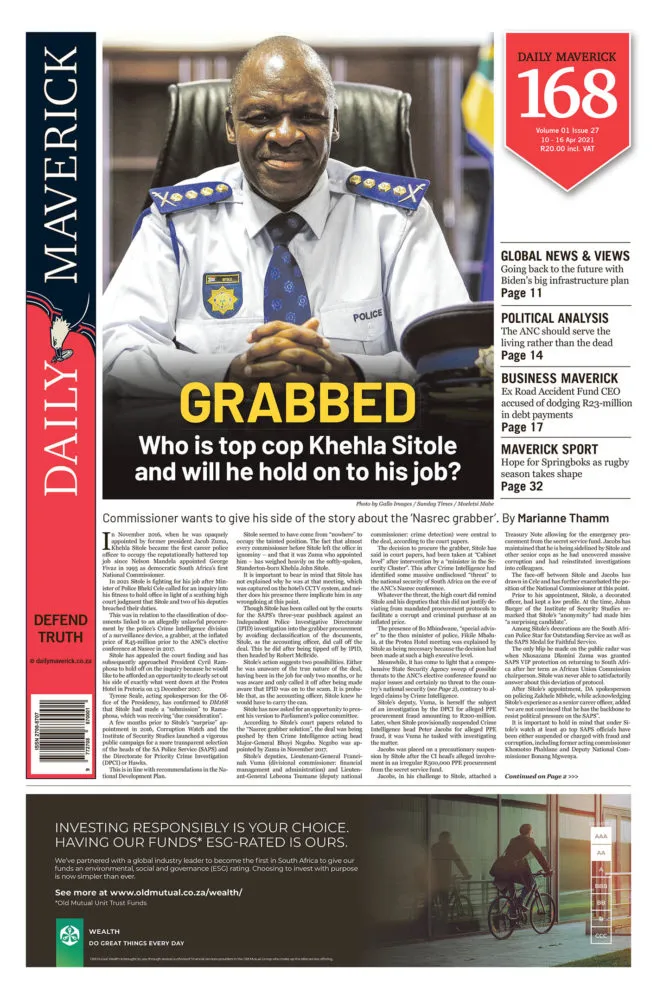First published in the Daily Maverick 168 weekly newspaper.
The story of the gold mine at Blyvooruitzicht is symbolic of so many things, most of all perhaps the decline of gold mining in SA. The mine, founded almost a century ago, is situated 5km south of Carletonville, and is so iconic that the village was the setting for a 1970s SABC TV soap opera called The Villagers. The highest point in the village is a hill called Isidingo, which is where the mine manager’s house was built. The SA soap opera Isidingo derived its name from that hill.
It has changed ownership from Rand Mines, later to DRD, then Village Main Reef and more recently Blyvoor Gold. And the irony is that gold grades have always been good, so much so that in the 1970s the mine village was notionally one of the richest per capita places in the world (assisted by the fact that there weren’t many capita).
But the irony of wealth is that it attracts, how should we put it, gold-diggers. The mine was unionised by the National Union of Mineworkers (NUM), which called a wildcat strike in 2012. The strike quickly grew angry and as a result the mine was closed and the 2,000 workers at the mine lost their jobs.
One of those workers was Wels Sempe, who approached board members of Blyvoor Gold to try to restart the mine. The mine had been stripped and the model mining village of Blyvooruitzicht became one of SA’s many disintegrated, destitute, semirural dorpies.
With Sempe’s support, the new management decided to do things differently. Sempe and his fellow miners formed their own union. Union members own shares in the mine and Sempe was appointed to the board.
Over the next five years, the mine was rebuilt with local and international investment. It had just started producing gold and sent its first shipment to Rand Refinery when Sempe was murdered. He was shot three times in his car on 2 March 2021, apparently by a well-known hitman who is sought for the murder of at least six other people.
So now we enter the realm of speculation. NUM had started to campaign on the mine and had gained some support. Sempe’s life had been threatened by a NUM organiser George Kgoroyaboco, ironically the same person who called the strike back in 2012.
A strike was called and about 100 miners supported the unprotected strike. Mine management then fired the strikers, but re-employed some of them immediately.
Since then, the mine entrance has been blockaded by a dozen or so expensive cars, and so the mine has been closed and the employees advised to leave the area. The cars presumably belong to zama-zamas. Oddly, the zamas often want an operational mine rather than a deserted mine, as this allows them to get their people into the shafts. But they can only do this if the mine is controlled by unionists they have struck a deal with, which means the mine must be unionised by a zama-friendly union, in this case, one presumes, NUM.
We often talk and write about NUM, but there are of course different levels in the mine union organisation, which often have different interests. For NUM head office, murdering mine executives is presumably not a great idea. Hence, publicly, NUM has claimed it knows nothing and has had nothing to do with the murder. It also claims the workers are being exploited, and their union is a management-controlled union.
Far from causing the unrest and blockading the mine, the union claims management have locked workers out! It says that mine management should “desist from entering into union politics”. Mine management claim they don’t have to negotiate with NUM because they have a closed-shop agreement with the workers.
NUM has called for the intervention of the Department of Mineral Resources, which in some ways would be the right course of action. But it’s hard not to notice that the Minister of Mineral Resources, Gwede Mantashe, was once Secretary-General of NUM.
So who was behind the killing of Sempe? Local union leaders? The zamas? Someone else? The police are, shall we say, investigating.
Sempe’s death seems like a local affair in a small town on a small mine in a small country. But it’s more a symbol of just how hard it is to mine in SA, and how little accountability, common sense and constructive willingness to find a solution there is in the industry. That’s not new, but it is sad. DM168
This story first appeared in our weekly Daily Maverick 168 newspaper which is available for free to Pick n Pay Smart Shoppers at these Pick n Pay stores.


















 Become an Insider
Become an Insider
Comments - Please login in order to comment.